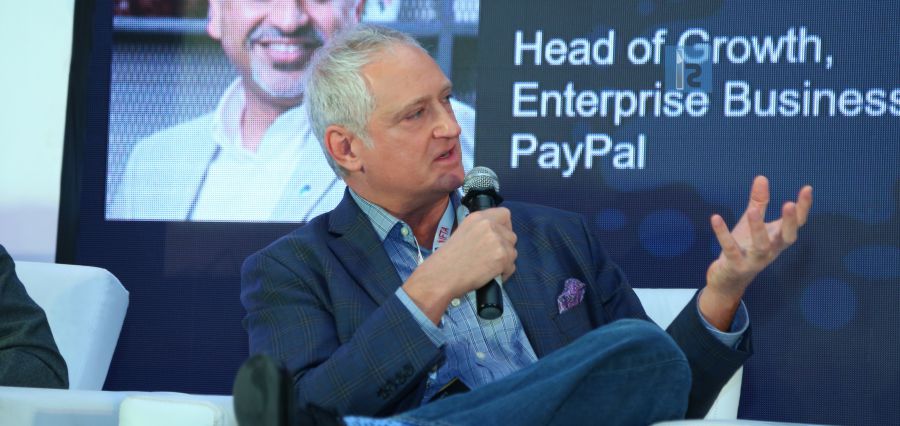Creating a benchmark for others is often a responsibility bestowed upon a leader. In order to be worthy of being an influential personality, a true leader adapts to various strategies, further implementing them for the betterment of an organization. Although global professional services are flourishing in every dimension, the requirement of such personalities has become a need rather than a want. To dwell on the top of the industry, an organization requires a good marketing strategy which needs to be exceptionally executed by a prolific marketing leader. Ric Navarro is one such leader, whose marketing tactics have helped his organization Norman Disney & Young, A Tetra Tech Company, to reach great heights. Ric’s creation of the Four Cs’: Customers; Content; Channels; Consistency methodology, as outlined in his book, Marketing with Purpose: a CSuite guide to being truly customer-centric, has created a huge impact on the top and bottom line performance of his organization, resulting in a number of personal global awards and accolades.
Emergence of a Leader
Prior joining to one of the Australia’s largest newspapers, The Age, Ric graduated from university with a journalism degree. This job bestowed him with an opportunity to work on communications and media for the Office of The Prime Minister. Thereafter, he went on exploring and honing his marketing and communications skills in B2B and B2C roles across diverse industries including FMCG, mining, infrastructure, sporting and professional services.
This diversity of sectors – and the nature of the roles themselves – required innovation and agility to lead, develop and manage the marketing and communications remit. Thus, Ric hopes for more number of journalists, writers and content creators to move into marketing leadership roles. After all, not all communications is marketing, but all marketing is communications.
A Broader Sense of Marketing
At Norman Disney & Young, Ric and his team believes in following a fundamental step that many brands fail to embrace effectively which is to comprehend the requirements of the target audiences and to meet – and where possible, exceed – customer expectations accordingly.
To achieve this requires comprehensive and deep-dive research to articulate a compelling and targeted Customer Value Proposition (CVP). But to create a meaningful CVP, an organization needs to find out the language that its customers’ use to describe the product and how they benefit from it. Ric says the way many brands speak about their product or service can often differ from how customers describe it—therefore, comprehensive customer research is vital.
As Ric outlines in his book, Marketing with Purpose, a CVP is a clear statement that encapsulates three key criteria:
- Relevancy: explains how your product or service improves a specific customers’ life or solves their problems
- Value: delivers quantifiable concrete benefits
- Differentiation: shows your ideal customer why they should buy from you and not from the competition.
Imposing Better Marketing Strategies
Marketers need to position themselves as vital cogs the organizational hierarchy and in brand building. And by this, Ric means the bottom line.
“It’s important to keep your business and brand strategy at the heart of everything – this enables the business to understand why it’s so critical,” said Ric Navarro.
Ric is always careful to frame marketing activity in terms of how it’s helping enable the business, and how it’s a strategic driver of growth for the business.
If the most senior marketer goes into a boardroom and starts talking about soft measures and doesn’t connect the dots to what the pressures are on a board, then they’re not going to have a very productive conversation.
But if marketers really think about where the two meet, that is, where the customers’ do needs meet and where the company does needs meet, they can transform the conversation. Ric says this is the sweet spot where senior marketers can have a really fruitful conversation around how marketing can drive profitable growth for the business.
Being Customer-Centric
According to Ric, keeping an eye on the competition is beneficial but cautions against obsessing over the competition. From his experience, Ric has seen too much energy and focus on the competition draining creative and strategic clarity from the core activity of marketing teams. Rather, the focus must be – first, foremost and always – on the customer: What’s their experience with your brand like? Are you ensuring all customer touch points are seamless and being constantly refined? What’s your average response time to any customer issues?
According to his experience, valuable competitor insights come organically through Voice of Customer programs, social listening tools, and social media. Marketing leaders should have in place robust martech solutions that focus on doing just as much listening as they do publicizing. “Customers will be the first to point out competitor comparisons – they remain your north star to brand differentiation,” said Ric Navarro.
Catching-up with the Volatility
Ric’s says everyone wants to ‘go digital’ and believes that too many senior leaders are obsessed about digital technology as the panacea to solve or improve marketing strategies and customer retention.
For some, digital is solely about the technology, while others think digitization is a new way of engaging with customers. Meanwhile some approach digital reform to represent an entirely new way of undertaking their internal business processes. None of these definitions are incorrect. But such diverse perspectives repeatedly trip up C-Suite and leadership teams as they reflect a lack of alignment and common vision towards the brand. This often results in piecemeal initiatives or misguided efforts that lead to missed opportunities, under-performance, incomplete solutions, or false starts.
“Not so long ago, digital transformation occurred in small pockets of a brand, perhaps with a team doing cool incubator projects that might percolate to the top. Today, it’s happening in every direction. This has a major impact on how quickly brands – and their marketing teams – need to adapt culturally and organizationally in order to be customer obsessed,” said Ric.
Ric knows that a successful orientation towards a digital experience requires significant transformation across an organization. He says references to ‘seamless digital experience’ should always infer ‘better customer experience’. He specifically understands that marketing and business leaders simply don’t have the resources to spend days reading 200-page reports for each new piece of marketing technology. Instead, they require synthesizing the information by asking one key question: ‘how will this technology enhance our customer obsession strategies?’
Ric holds a strong insight over the fundamentals of digital transformation and provides the following insights: Quite simply, I merge the left-and right brain discussion that surrounds digital strategy and break down the fundamentals of digital transformation into three key elements:
- The in-house tools, tech, and analytics to guide customer obsession strategy and actions,
- The methods and means by which to reach and interact with customers,
- The digital environment where your customers engage with your brand.
These are my three fundamentals that I apply in the development of a fully formed digital customer experience solution.



















